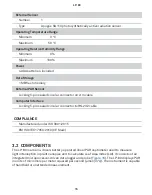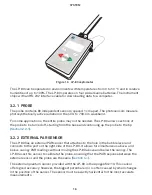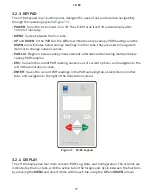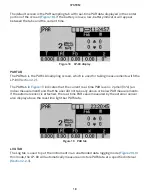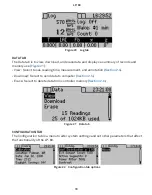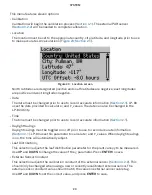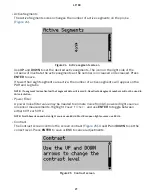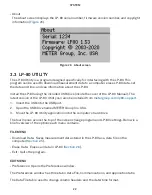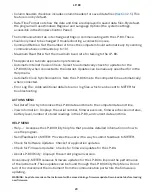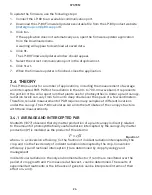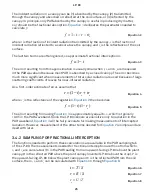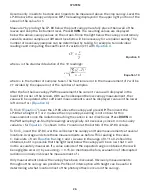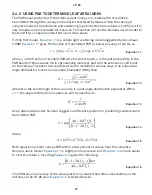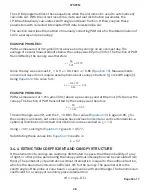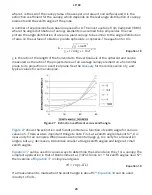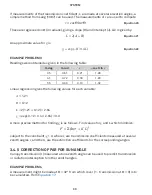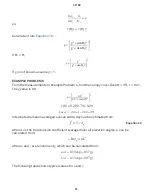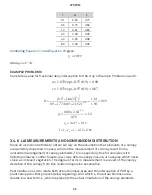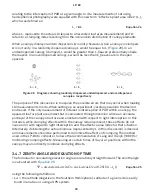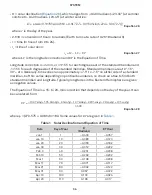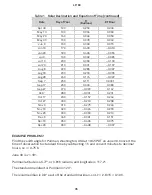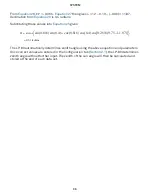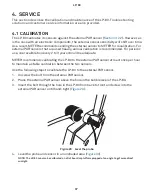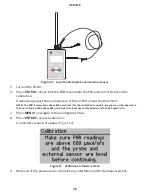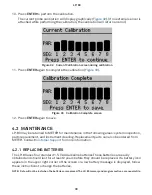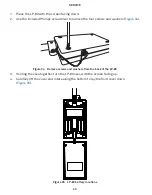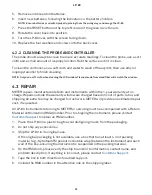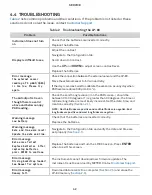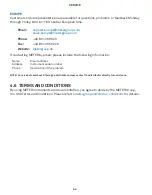
29
LP-80
where
L
is the LAI of the canopy (area of leaves per unit area of soil surface) and
K
is the
extinction coefficient for the canopy, which depends on the leaf angle distribution of canopy
elements and the zenith angle of the probe.
A number of expressions have been proposed for
K
. The most useful is from Campbell (1986)
where the angle distribution of canopy elements is assumed to be ellipsoidal. One can
picture the angle distribution of area in a plant canopy to be similar to the angle distribution
of area on the surface of oblate or prolate spheroids, or spheres. The equation for
K
is
Equation 18
χ
χ
χ
=
+
Θ
+
+
−
K
tan
1.744(
1.182)
2
2
0.733
χ
is the ratio of the length of the horizontal to the vertical axis of the spheroid and can be
measured as the ratio of the projected area of an average canopy element on a horizontal
plane to its projection on a vertical plane. See the
for more discussion of
χ
and
typical values for some canopies.
Figure 27 Extinction coefficient versus zenith angle
shows the extinction coefficient plotted as a function of zenith angle for various
values of
x
. There are two important things to note. First, at a zenith angle of about 57°,
K
is
near unity for all canopies. When leaves are horizontal (large
χ
),
K
is unity for all elevation
angles, but as
χ
decreases,
K
becomes smaller at large zenith angles and larger at small
zenith angles.
can be used in various ways to determine the LAI and also the
χ
for a canopy. The
simplest application is that of Bonhomme et al. (1974). Since
K
= 1 for zenith angles near 57°,
the inversion of
is simple and gives:
Equation 19
τθ =
−
KL
exp(
)
If a measurement is made when the zenith angle is about 57°,
can be used
directly to find
L
.

